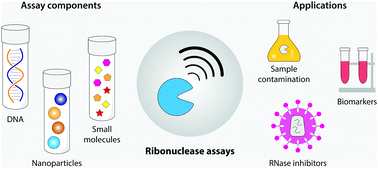DNA-based ribonuclease detection assays
Abstract
Ribonucleases are useful as biomarkers and can be the source of contamination in laboratory samples, making ribonuclease detection assays important in life sciences research. With recent developments in DNA-based biosensing, several new techniques are being developed to detect ribonucleases. This review discusses some of these methods, specifically those that utilize G-quadruplex DNA structures, DNA-nanoparticle conjugates and DNA nanostructures, and the advantages and challenges associated with them.

- This article is part of the themed collection: Journal of Materials Chemistry B Emerging Investigators


 Please wait while we load your content...
Please wait while we load your content...